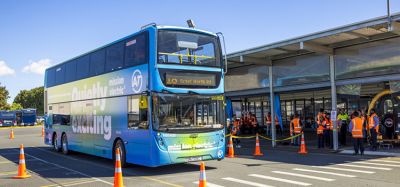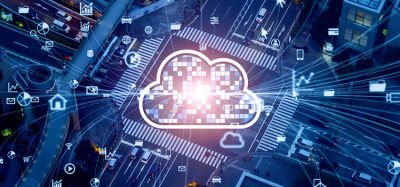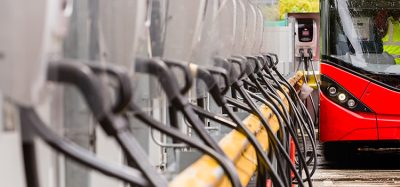How has COVID-19 impacted 2020’s mobility trends?
- Like
- Digg
- Del
- Tumblr
- VKontakte
- Buffer
- Love This
- Odnoklassniki
- Meneame
- Blogger
- Amazon
- Yahoo Mail
- Gmail
- AOL
- Newsvine
- HackerNews
- Evernote
- MySpace
- Mail.ru
- Viadeo
- Line
- Comments
- Yummly
- SMS
- Viber
- Telegram
- Subscribe
- Skype
- Facebook Messenger
- Kakao
- LiveJournal
- Yammer
- Edgar
- Fintel
- Mix
- Instapaper
- Copy Link
Posted: 22 April 2020 | Carol Schweiger - Schweiger Consulting | No comments yet
As the novel coronavirus (COVID-19) continues to rock the transport and mobility sector, Carol Schweiger suggests revisions to her 2020 mobility trend predictions made earlier this year, suggesting the likely routes public transport groups and mobility providers will take in the coming months.
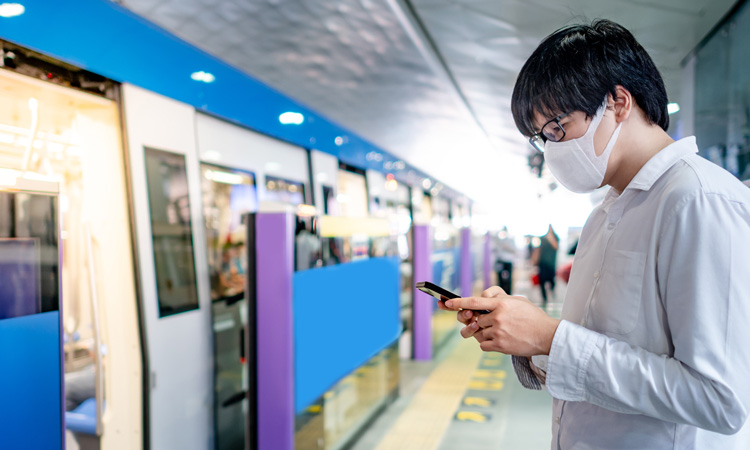

When I wrote about my predictions of technology-enabled mobility in 2020 at the beginning of February, I had no idea that COVID-19 was around the corner and that it would impact our already-disrupted transportation ecosystem in the way that it has. In this time of social distancing, shared mobility, including public transport, has taken on a different nature: travellers are being asked to avoid travelling unless it is absolutely necessary. Public transport agencies are cutting service – leaving just enough service so that those who must travel can social distance as requested. Further, micromobility has been modified in a great number of cities – some companies have pulled their vehicles and others have increased service. So when I was asked to describe the impact of COVID-19 on my 2020 predictions, I had the following thoughts.
1. Focusing on travel time goals
As you may recall, my first prediction is that we will see more travel time goals in major urban areas as a result of transportation planning efforts. Meeting these goals will be facilitated by the use of technology-enabled mobility services. The impact of COVID-19 is likely minimal on long-term travel time goals as expressed by Dr Janil Puthucheary, Senior Minister of State, Ministry of Transport & Ministry of Communications and Information in Singapore in a speech on 5 March 2020.1 He stated that while Singapore must address the immediate impact of COVID-19, it must continue its efforts to reach the goals articulated in Singapore’s Land Transport Master Plan for 2040.2 However, it is possible that transportation planning in general may experience a two-fold change: one in which the modelling that forms the basis of planning takes into consideration situations such as natural disasters and disease outbreaks, such as the COVID-19 pandemic; and one in which the transportation planning process is much more flexible than it is now.


2. MaaS is multimodal
The second prediction is that traffic management will be recognised as a significant portion of Mobility-as-a-Service (MaaS). It is expected that Traffic Management 2.0 (TM 2.0) and Transportation Systems Management and Operations (TSMO) will be integrated into MaaS in 2020. The potential impact of COVID-19 on this prediction is minimal because including data from traffic management and operations should not be affected by a pandemic even though mobility choices certainly will be affected.
3. Public autonomous transport
The third prediction is that autonomous vehicles (AVs) will actually be put into public transport service, rather than being operated just in pilots and trials. COVID-19 is likely to have a considerable impact on the deployment of AVs, particularly due to keeping transit operators safe from the virus. Around the world, transit operators have lost their lives to COVID-19, prompting transport agencies to employ safety measures such a rear-door boarding, eliminating on-board fare payment and installing panels next to the driver, significantly reducing driver exposure if travellers are paying their fare on-board or simply boarding through the front door. If AVs could be pressed into service sooner, drivers would not be exposed to the virus.
Further, public transport AVs with no human attendants are being used to carry critical testing supplies to and from medical facilities, such as what the Jacksonville Transportation Authority has been doing since early April 2020. “The JTA is working with Beep, an autonomous shuttle fleet service provider, and French AV builder NAVYA to use them to drive the tests collected at Mayo’s [Mayo Clinic in Jacksonville] new drive-thru testing location. Four of the AVs are being used.”3 These are the same AVs that will eventually become part of JTA’s Ultimate Urban Circulator programme.
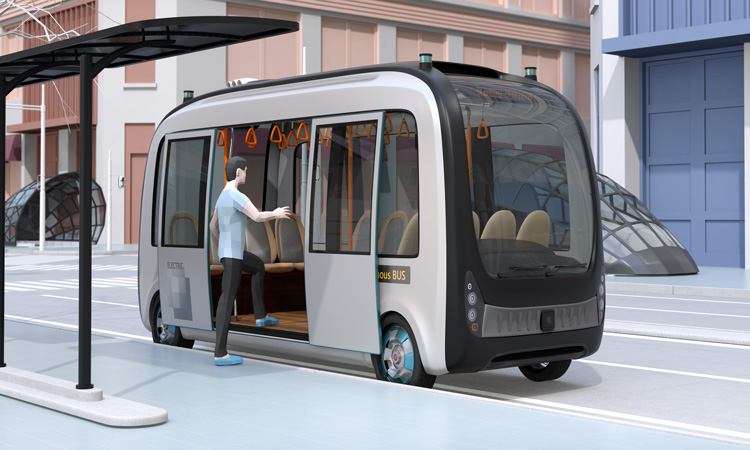

4. Utilising Artificial Intelligence
The fourth prediction is that we will see more use of artificial intelligence (AI) and deep learning in public transport in 2020. The impact of COVID-19 on this prediction is significant as it may already be accelerating the development and deployment of AI in five of the six areas that I cited in the original article: (1) Customer experience improvement through digital assistants; (2) Optimisation of operational efficiency through predictive analysis of mobility demand; (3) Autonomous dispatching and operations to better meet the increasing demand and dynamic environmental changes; (4) Effective preventive maintenance operations; and (5) Preventive safety and security management using AI powered video analytics.4
Each of these areas represents a reduction in staffing and human contact or proximity. For example, digital assistants could be used to substitute for human contact regarding purchasing fare products or even performing like a wheelchair tie-down after a traveller in a wheelchair boards a bus. In terms of preventative safety management, AI could be used to check the temperatures of boarding travellers and be used to regulate the use of public transport. Optimisation of operational efficiency during social distancing could be accomplished by AI as well by examining demand and the limited supply of service.
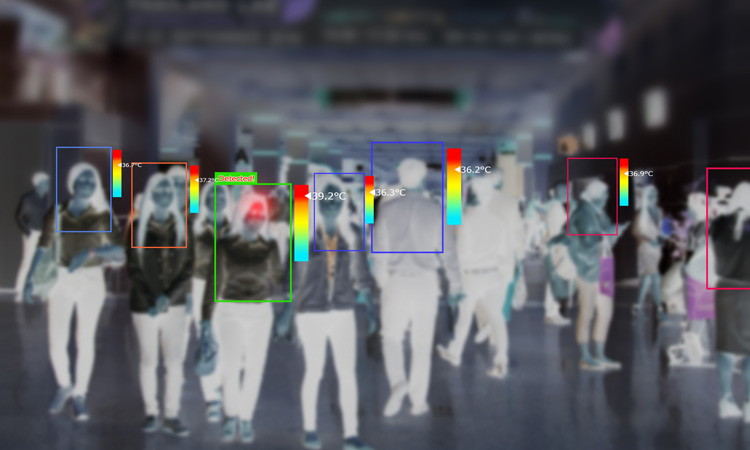

5. Perfecting the ‘complete’ trip
The fifth prediction is a continuation of one I made for 2019 – that there would be a focus on the “Complete Trip.” One example of the complete trip is embodied in the USDOT Complete Trip – ITS4US Deployment Program, which is “to help communities develop comprehensive, seamless and efficient transportation solutions to increase mobility access. The goal is to enable people to travel independently from one point to another, regardless of the number of connections, transfers, or modes of transportation. The programme focuses on holistic approaches that create more choices and better access for older adults, people with disabilities and underserved communities in rural and small urban areas.”5
Without a pandemic, there are numerous barriers to persons with disabilities, older people and low-income individuals attempting to make a “complete” trip. There are even more barriers with COVID-19 – most of them are related to social distancing and required human interaction. For example, while many transport systems have moved to rear-door boarding, someone with a disability may need to board using the front door. Further, if a vehicle has seating restrictions due to social distancing, a traveller will need to know about seating availability before and while they are making their trip. Finally, if a passenger requires special assistance, such as having the vehicle operator secure their wheelchair within the vehicle, it will be virtually impossible to maintain a safe distance between the traveller and driver.
So attaining a complete trip in the time of COVID-19 may be challenging unless several technology-enabled mobility solutions are advanced quickly. These include providing real-time seating (and wheelchair space) availability taking into account social distancing, automated wheelchair securement systems and AVs that incorporate accessibility.


6. Kerb-side management
The sixth prediction is the proliferation of kerb management initiatives and systems. COVID-19 has already had a great impact on this area due to the rapid changes in kerb uses as well as parking reductions. Many cities have been making changes to allow short-term parking to allow food take away, and reduce or eliminate parking near areas that attract large groups of people (e.g., beaches, parks). Technology-enabled kerb management solutions are facilitating these actions during the pandemic.
7. An open system
The seventh and final prediction is that in 2020, we will continue to move toward open platforms and data to drive technology-enabled mobility services. COVID-19 has the potential to accelerate the development and deployment of open platforms and data. For example, incorporating social distancing into a MaaS platform would be one way of ensuring that travellers are provided with all available and safe mobility options.
This type of MaaS platform has been developed by Iomob and Factual. “The CORE MaaS (COvid-19 REsilient Mobility as a Service) project proposes to develop an open [software development kit] SDK-based middleware platform that integrates available mobility service providers (MSPs), public transport, taxis, and other mobility services across multiple cities and regions within Continental Europe. The platform will provide intermodal routing algorithms to allow users to select available mobility options within a selected geography that optimise social distancing, as a prioritised parameter.”6


Further, from an open data perspective, COVID-19 may encourage open data by MSPs since mobility services are changing sometimes on a daily basis. For example, a public transport agency may decide to cutback bus service in a particular area of a city, but then find that because of social distancing and servicing “essential” business, service will be increased. With these decisions being made quickly, open data describing these service changes should be made available in real-time to a variety of information service providers. As mentioned in my original 2020 predictions, this data must be open to facilitate real-time mobility decisions.
Finally, a related data issue that I predict for 2020 is a recognition of the need for data ethics, which is required primarily to ensure that there is equality and morality in mobility services. The impact of COVID-19 on this prediction is critical in that we need to be looking at mobility data during without biases while also protecting personally identifiable information (PII). This will help us to better understand not only the effects of the pandemic on mobility services (e.g., decreased ridership on public transport, increased use of scooter-sharing, where crowding exists on public transport), but also travellers’ demographics, origin and destination pairs to identify where certain levels of service may be warranted (e.g., given social distancing or high essential employment locations).
References
1. https://www.mot.gov.sg/news-centre/…
2. https://www.lta.gov.sg/content/ltagov/…
4. Dan Scanlan, “Coronavirus: JTA’s autonomous vehicles transport COVID-19 tests at Mayo,” The Florida Times-Union, April 6, 2020, https://www.jacksonville.com/…
4. Gayang HO, Clémence MORLET, LOOI Teik Soon, Dr. Evan GWEE and Alok J AIN, “Artificial Intelligence in Mass Public Transport,” Paper Number AP-CP2236, Proceedings of the 2019 ITS World Congress, Singapore, 21-25 October 2019.
5. “Access and Mobility for All Summit,” Remarks Prepared for Delivery by U.S. Secretary of Transportation Elaine L. Chao Disability Access and Mobility for All Summit, Washington, DC, Tuesday, October 29, 2019, https://www.transportation.gov/briefing-room…
6. Scott Shepard, “CORE MaaS: A Social Distancing Mobility Platform,” Urban Mobility Daily, March 27, 2020, https://urbanmobilitydaily.com…
Related topics
Artificial Intelligence, COVID-19, Infrastructure & Urban Planning, Mobility Services, Public Transport, Sustainable Urban Transport, Vehicle & Passenger Safety
Related organisations
Schweiger Consulting LLC
Related people
Dr Janil Puthucheary




